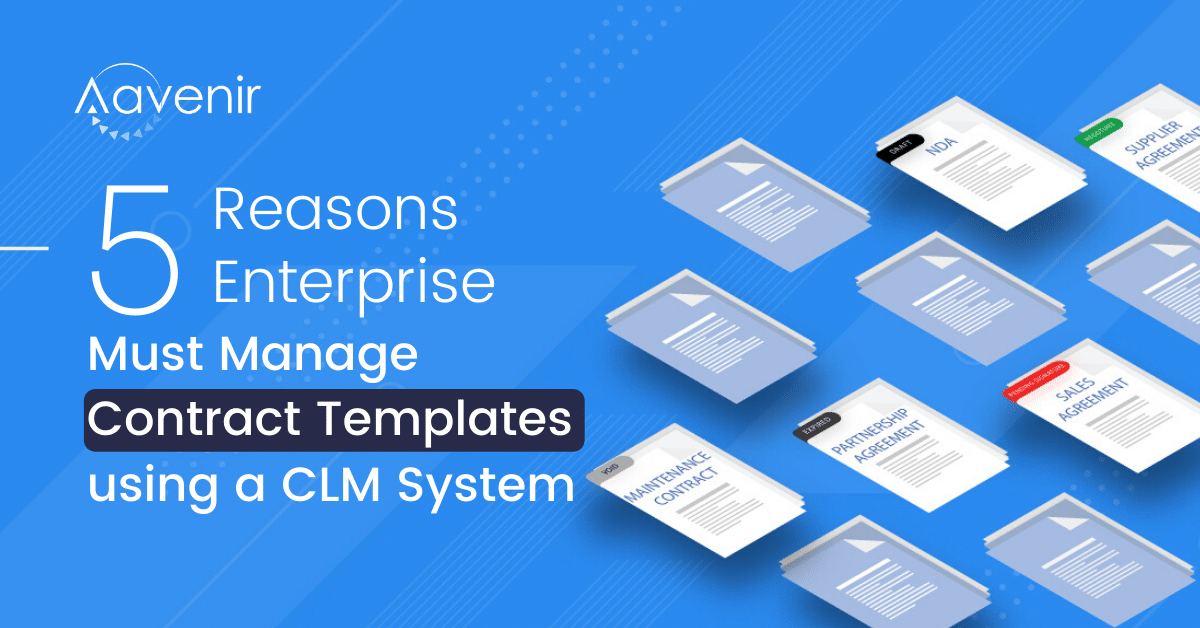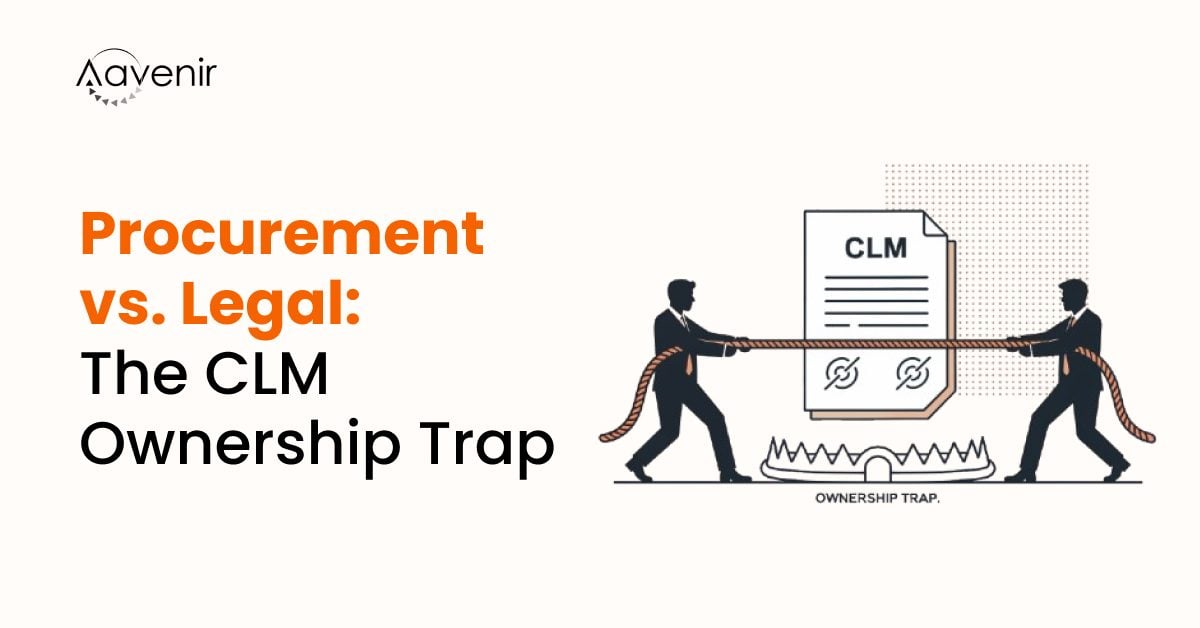Business leaders should not have to email or call an attorney to create an agreement that they are expected to administer. A contract should not take countless hours to review and negotiate. We should live in a world where contracts are written in standardized and accessible language—where potential business partners can sit down over a short lunch without their lawyers and read, truly understand, and feel comfortable signing a contract. Isn’t it a good enough reason to sink a ship? Moreover, with the outbreak of COVID-19, organizations have started reviewing contracts for any possible dispute on force majeure clauses. This could be a very time-consuming process with a lack of standardization across thousands of contracts. For these reasons, enterprise contracts are under the purview and written in industry-standard contract language. Enterprise can significantly minimize the business risk and realize the true value of contracts by designing legal processes that are driven by standardized contract templates in contract lifecycle management software. Contract templates can solve many problems in the organization, however, managing contract templates with the most competitive industry-standard language and making them easily accessible to all business stakeholders is a great challenge in itself. An enterprise-class CLM (Contract Lifecycle Management) software can enable easy access to the most latest version of the contract template, makes it easy to track the changes and hence, reduces the negotiation and approval cycle. Perhaps these are the reasons to serve as a force for good.
Benefits To Manage Contract Templates within a CLM Software
The benefits of adopting standardized contract templates in Contract Lifecycle Management Software are:
1. Improves contract drafting experience
Let’s face it: drafting contracts can be overwhelming, especially when you’re starting from scratch at a blank, white screen. Using legal-approved contract templates, the contract manager can quickly draft the contract by just adding a set of key values for that contract, e.g. other party’s name, start date, end date, jurisdiction, payment terms, etc. No need to worry about the latest clause to be used; just enter the key values and your contract is created automatically.
In most enterprises, it takes multiple emails before a contract request was even assigned to legal. Using Contract templates within CLM System, any employee can easily draft contracts in standardized language and format. Instead of preparing a contract every time from scratch, procurement/sales/HR managers can fill blank spaces in the template, and their presentable contract with the most competitive terms and language is ready to be signed.
2. Accelerates the internal contract approval process
Usually, contract approval is the slowest part of any contract lifecycle as the legal reviewer has to read through every line of the contract and that can be daunting. However, if a contract is created from a pre-approved template, the legal reviewer can just focus on reviewing key values and possible deviation from the standard language. It saves 70% time for the legal/internal stakeholder review. It also eliminates mundane repetitive tasks and allows them to focus on high-value strategic activities.
What was once a tedious and time-consuming process is now a much better experience for everyone involved.
Using a sophisticated CLM system, an enterprise can also enable self-service contract drafting experience and allow departments to execute contracts even without legal reviews. Smart CLM solutions like Aavenir Contractflow can help enforce compliance to the legal-approved language and automatically invoke legal approval if the standard language is modified.
3. Reduces Contract Negotiation time
Typically, contract negotiations include long spending hours in a conference room, talking to lawyers, and researching past agreements. Contract templates streamline the contract negotiation process so everyone can focus on deliverables instead of researching different documents.
Using the CLM system, you can see past golden contracts for similar use cases and use them as a base to renegotiate with vendors to get a better deal and rewards. If you are looking for a contract negotiation software, here’s a detailed list of the best contract lifecycle management platforms to help you choose the right platform for your business.
4. Reduces the business risk and Improves Contract Compliance
A good contract template creation process takes all the risks into consideration and includes unique business-specific clauses to mitigate risks. These templates help the legal team to simplify the contract negotiation process for stakeholders. Moreover, the legal team can keep track on most negotiated clauses and standardize clauses to keep track of the effectiveness of their language
One of the primary purposes of having contract templates is to improve compliance. With different languages across different contracts, you may end up with different sets of payment terms, obligations, clauses, and other contact information for similar vendors/customers/employees. The pre-approved templates enforce you to be compliant with the same language across all similar contracts. And, the legal team needs to ensure all the latest updates are continuously being incorporated in the contract templates for further use.
Moreover, the compliance to contract language would improve transactional compliance as well.
5. Eliminates chances of brand reputation crisis
The non-compliance to legal language can not only cost you money but it can damage your company’s reputation. A contract dispute often results from a misunderstanding or a disagreement over the terms of the document. This can occur when the language contains mistakes, complicated or unclear terminology, or poorly-explained technical terms. While disputes are possible with any contract, a well-written agreement will include an unambiguous dispute clause that outlines the procedure for handling, including everything from how and to whom a dispute will be reported to a timeline and a process by which it will be resolved.
It portrays the organization as someone who is easy to do business with and reduces the negotiation cycle. If you draft a new contract every time, the contract consistency goes down and complexity goes up. The same customer (or vendor) may receive a different language when they are ready for repeat business with you. Hence, organizations look for consistency across contracts. Contract templates help you to with brand building with your trading partners.
End Notes
With complex and evolving business situations, organizations need to make it easy and quick to create contracts. Contract templates assure business stakeholders about the accuracy of the language and allow the business stakeholders to focus on strategic business terms instead of having them worry about the standard legal clauses!
CLM solutions like Aavenir Contractflow manages contract templates, terms & clauses templates, and legal playbooks in a full-text searchable centralized repository on ServiceNow – making it easy to access; standardizing legal language across enterprise departments and geographies; and, reducing time to author contract.



